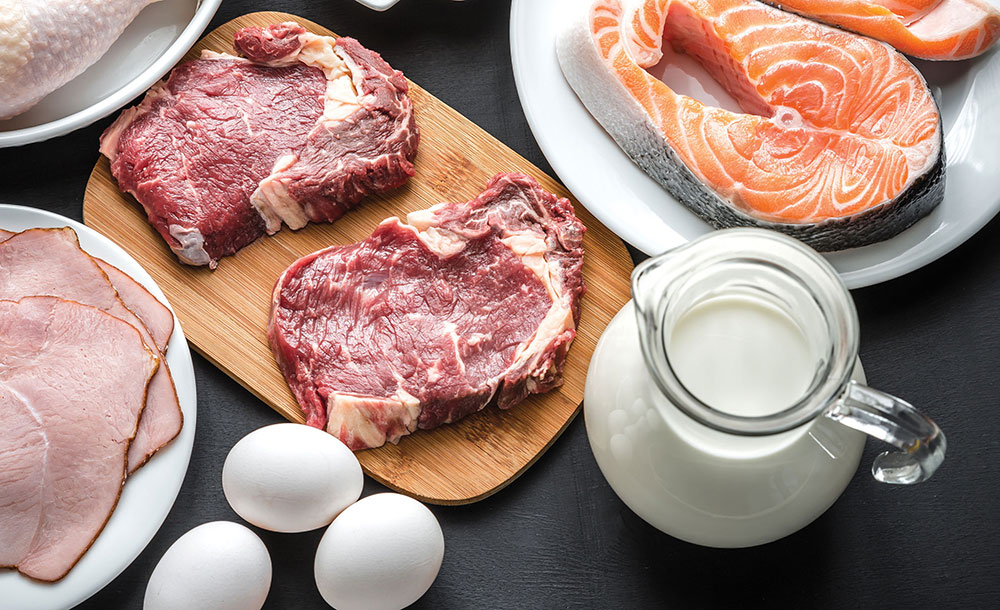
Many people used to think that a little sunlight every day would give them all the vitamin D they needed. So, when Lakeesha, who takes a daily walk with her son, learned she was low on vitamin D, she was surprised! It turns out her 10-minute walk wasn’t enough for her body to get all the vitamin D she needed from sunlight.
Vitamin D is a vitamin that dissolves in fat. Small amounts are in some foods, and some foods are fortified with vitamin D (also referred to as calciferol). Your body also makes vitamin D when sunlight touches your skin.
Vitamin D helps your body absorb calcium from food, which is important for strong bones and healthy growth. It also helps with cell growth, fighting inflammation, and supporting your immune system. For pregnant people, getting enough vitamin D can help lower the risk of gestational diabetes (high blood sugar during pregnancy).

400 IU
(usually in liquid form)
600 IU
800 IU
Need an excuse to get outside? Spending time in the sun is one way to boost your vitamin D. If you have lighter skin, 10–20 minutes of sunlight might be enough. People with darker skin may need closer to 90–120 minutes to get the same amount of vitamin D. But factors like season, sunscreen, cosmetics, and clothing can reduce how much vitamin D your body can make from sunlight. Too much unprotected sun exposure also increases the risk of skin damage and cancer.

Some foods naturally contain vitamin D, while others are fortified with it. Here are some good sources:

Surprisingly, mushrooms exposed to UV light can be a good source, too. Just half a cup contains 366 IU or about 46% of the daily recommended amount.
If you’re not getting enough vitamin D from the sun or food, supplements are an option. They come in liquid form for infants, and in chewable or pill forms for older children and adults. Talk with your doctor or WIC provider before beginning any new supplements for yourself or your family.
Vitamin D is essential for everyone, especially pregnant people and young children. If you’re concerned about vitamin D, speak with WIC or your healthcare provider. A simple blood test can check your vitamin D levels.
Vitamin D Health Professional Fact Sheet
https://ods.od.nih.gov/factsheets/VitaminD-HealthProfessional/
Low vitamin D and Insulin Resistance
https://diabetes.org/food-nutrition/diabetes-vitamins-supplements/low-vitamin-d-insulin-resistance#:~:text=Food%20&%20Nutrition-,Low%20Vitamin%20D%20May%20Contribute%20to%20Insulin%20Resistance,of%20certain%20ethnic/racial%20groups.
Hypovitaminosis D and Gestational Diabetes
https://www.ncbi.nlm.nih.gov/pmc/articles/PMC7443670/
Role of Vitamin D and its Molecular Bases in Insulin Resistance, Diabetes,
Metabolic Syndrome and Cardiovascular Disease
https://www.ncbi.nlm.nih.gov/pmc/articles/PMC10607188/
Nutrient requirements for WIC-approved formulas:
https://www.ecfr.gov/current/title-21/chapter-I/subchapter-B/part-107#subpart-D
Nutrient requirements for WIC-approved foods:
https://www.fns.usda.gov/wic/food-packages/regulatory-requirements
Requirements for WIC canned fish:
https://www.ecfr.gov/current/title-21/chapter-I/subchapter-B/part-161/subpart-B/section-161.170
Nutrient info for:
Tuna in oil: https://fdc.nal.usda.gov/fdc-app.html#/food-details/173708/nutrients
Salmon pink: https://fdc.nal.usda.gov/fdc-app.html#/food-details/175175/nutrients
Salmon sockeye: https://fdc.nal.usda.gov/fdc-app.html#/food-details/173693/nutrients
Author: Bridget Swinney MS, RDN, LD